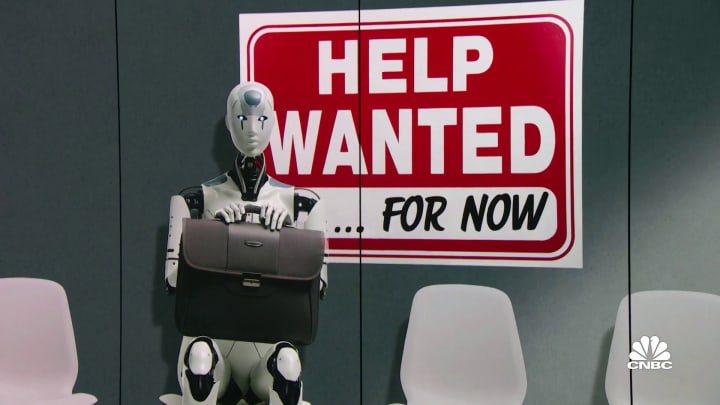Artificial Intelligence (AI) has taken over the world since the arrival of automated machines that could simplify human tasks. AI is not a specific software but is an ever evolving technology that is gradually growing its user base with each update bringing life changing features. In the early 2000’s AI was limited to computer programs that were able to solve basic calculations and problems.
But since the arrival of AI models, they have been way more advanced. They are able to replicate human actions and make them perfect using the vast amount of data-set avAIlable to them.
Popular Uses of AI
AI has undergone significant evolution, transcending mere task automation and simple equation solving. In today’s world, AI permeates nearly every aspect of human life, manifesting in various everyday appliances. From facial recognition software on smartphones to autonomous vehicles and automated bots, AI has established its omnipresence. These examples illustrate the capacity to instruct AI in specific tasks through the provision of relevant data.
How is AI Useful ?
Since the emergence of AI softwares in 2020, the work industry has received a huge growth in terms of quality and the amount of work done. Earlier industry professionals required a lot of time to create high quality images, unique content and solve long data calculations. With the help of these AI models, it is easy for them to complete their tasks in a short period. With the vast dataset of AI models and variety of tasks it can perform, it can provide useful contributions to any sector of the industry.
How Can AI and Humans Work Together ?
As mentioned earlier, AI models have the capability to simplify the work as they can complete a set of tasks quicker than a human counterpart. The best way for AI and humans would be to combine their individual skillets and create a perfect result.
Humans can take advantage of the task solving ability provided by these softwares and use their judgement skills to create the perfect form of result. It would be quite beneficial as AI would help in solving the tasks quickly and thus increasing the productivity of the human individual using it.
Here are some example of how AI can be used in various industries:
Data Management and Analysis
AI software has the capability to analyse and process huge sets of data in a short period of time. When processing a huge set of data, the human eye can miss some key detAIls, which the AI software can point out. Thus, resulting in a more accurate report.
Automation Tasks:
AI can handle tasks that are generally repetitive or have a fixed set of actions. Thus freeing humans to focus more on tasks which require creative thinking and decision making.
Interpretation and Translation of Languages:
Due to the vast set of data presented to the AI models, they can quickly help in translation and interpretation of languages. Also, it would be more efficient to do as the AI model would be able to handle all language translations very quickly.
Scientific Discovery:
Data analytics, simulations, and recognition of patterns in scientific research are some of the tasks that can be assisted by AI. Scientists carry out hypothesis formation, experiment designs and interpretation of results based on broader scientific knowledge. So AI can help them sort the data and find key points.
Using AI in Workspace
The workplace is being transformed in many ways by artificial intelligence. Such as AI-based chatbots that make customer service more efficient by giving fast responses to questions. For analyzing data, companies rely on these algorithms which use AI to recognize patterns and make forecasts from large data sets.
Besides, it increases work output thanks to its heavy reliance on machines capable of automatically executing monotonous duties like inputting records or making appointments. AI is becoming increasingly important in today’s work environment. As it not only increases productivity but also encourages creativity and innovation.
Navigating the Realm of AI Decision-Making
AI’s ability to make judgments and decisions is both remarkable and limited. Let’s explore this further:
Remarkable Aspects:
Data-Driven Decisions: AI excels at processing vast amounts of data and making decisions based on patterns it identifies. For example, in medical diagnosis, AI can analyze medical images and suggest potential diagnoses.
Speed and Efficiency: AI algorithms can process information much faster than humans. In fields like finance, AI can analyze market trends and execute trades swiftly.
Objective Consistency: AI doesn’t suffer from human biases. It consistently applies predefined rules without emotions or personal opinions.
Limitations:
Contextual Understanding: AI lacks true understanding of context. While it can recognize patterns, it doesn’t grasp the nuances of human situations.
Ethical and Moral Judgment: AI doesn’t possess inherent ethics or morality. Decisions based purely on data may not always align with human values.
Subjective Factors: AI struggles with subjective factors, such as empathy, intuition, and creativity. These are essential for complex decision-making.
Unforeseen Scenarios: AI operates within its trAIning data. When faced with novel situations, it may make incorrect decisions.
Human-AI Collaboration:
The future lies in collaboration between AI and human judgment. Humans provide context, intuition, and ethical considerations.
AI complements this by processing data, automating routine tasks, and suggesting options.
Conclusion:
In conclusion, the improvement of AI models is a great step towards the growth of industry. These AI tools will help individuals save time and increase productivity in the workplace. Also, it would simplify human tasks that would normally require a lot of workforce or time. So if human creativity with AI tools is used the result would be worth looking for.
How useful was this post?
Click on a star to rate it!
Average rating 4.8 / 5. Vote count: 4
No votes so far! Be the first to rate this post.
We are sorry that this post was not useful for you!
Let us improve this post!
Tell us how we can improve this post?





